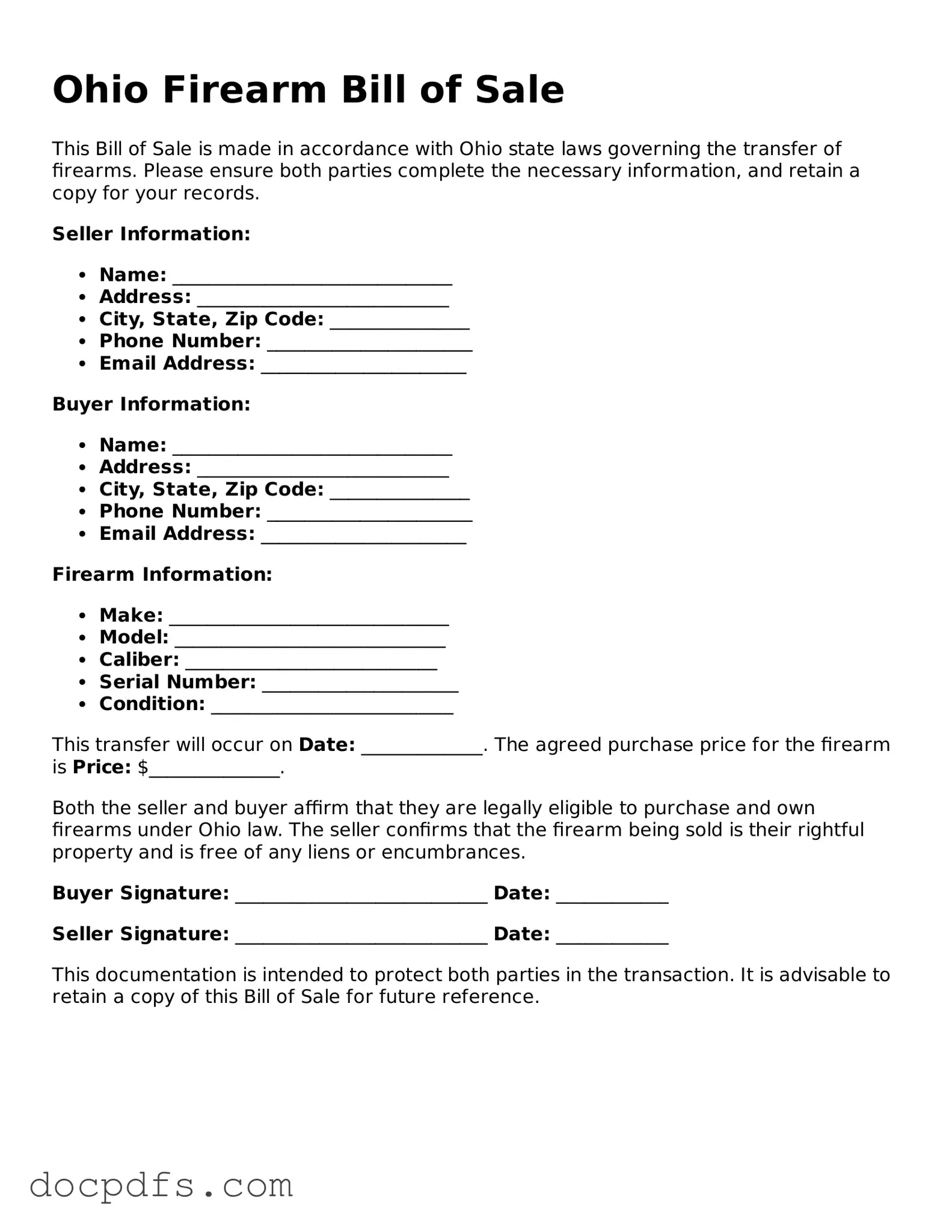In Ohio, the process of buying or selling a firearm involves several important steps, one of which is the completion of a Firearm Bill of Sale form. This document serves as a written record of the transaction between the buyer and the seller, providing essential details that protect both parties involved. Key elements of the form include the names and addresses of both the buyer and seller, the date of the transaction, and a detailed description of the firearm being sold, including its make, model, caliber, and serial number. Additionally, the form may include a statement affirming that the seller is the legal owner of the firearm and has the right to sell it. This not only helps to establish ownership but also ensures compliance with state and federal laws regarding firearm transfers. By documenting the sale, both parties can safeguard themselves against potential legal issues that may arise in the future. Understanding the significance of this form is crucial for anyone engaging in the sale or purchase of firearms in Ohio, as it fosters transparency and accountability in the transaction process.
